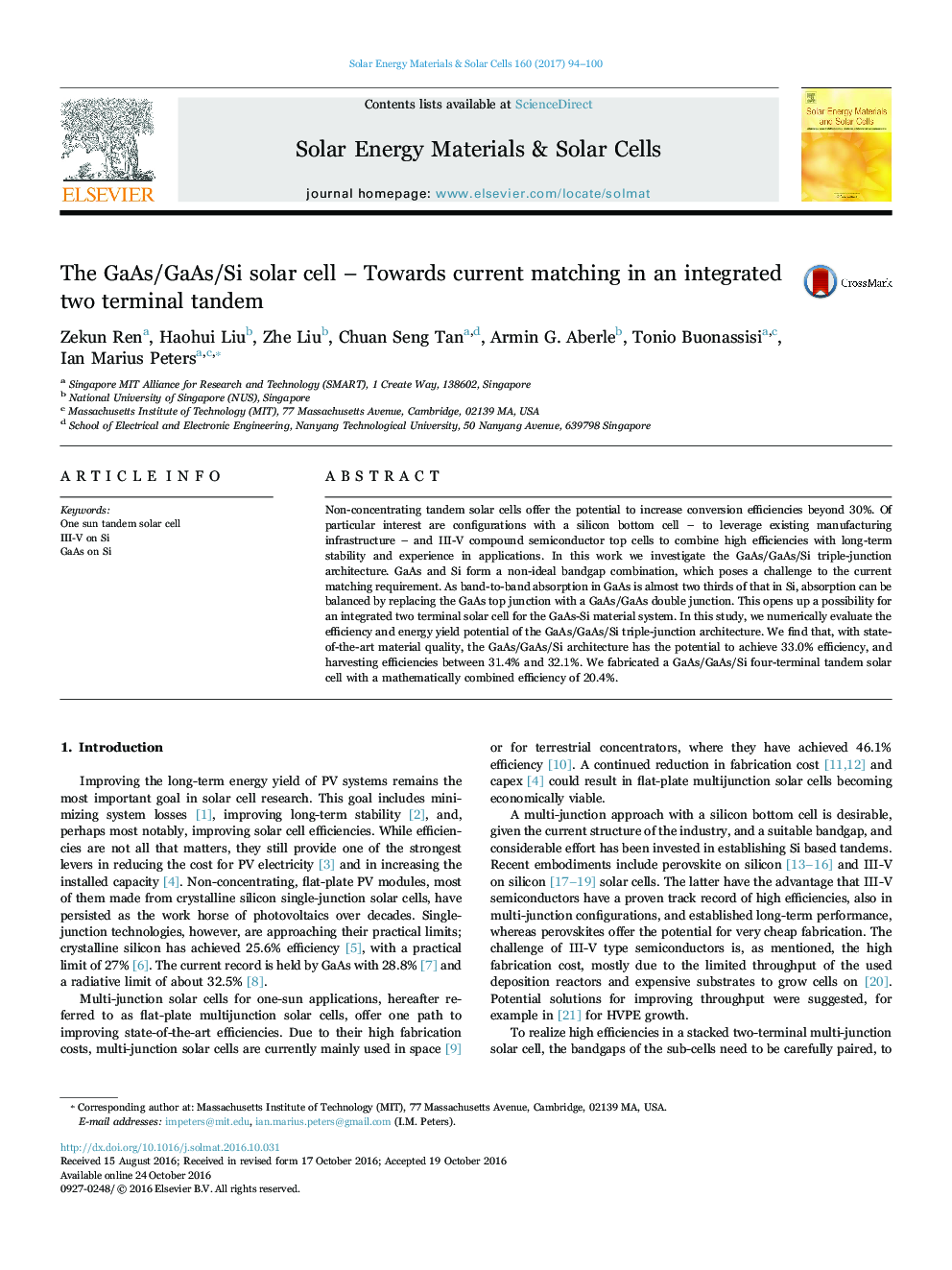| Article ID | Journal | Published Year | Pages | File Type |
|---|---|---|---|---|
| 6457311 | Solar Energy Materials and Solar Cells | 2017 | 7 Pages |
Abstract
Non-concentrating tandem solar cells offer the potential to increase conversion efficiencies beyond 30%. Of particular interest are configurations with a silicon bottom cell - to leverage existing manufacturing infrastructure - and III-V compound semiconductor top cells to combine high efficiencies with long-term stability and experience in applications. In this work we investigate the GaAs/GaAs/Si triple-junction architecture. GaAs and Si form a non-ideal bandgap combination, which poses a challenge to the current matching requirement. As band-to-band absorption in GaAs is almost two thirds of that in Si, absorption can be balanced by replacing the GaAs top junction with a GaAs/GaAs double junction. This opens up a possibility for an integrated two terminal solar cell for the GaAs-Si material system. In this study, we numerically evaluate the efficiency and energy yield potential of the GaAs/GaAs/Si triple-junction architecture. We find that, with state-of-the-art material quality, the GaAs/GaAs/Si architecture has the potential to achieve 33.0% efficiency, and harvesting efficiencies between 31.4% and 32.1%. We fabricated a GaAs/GaAs/Si four-terminal tandem solar cell with a mathematically combined efficiency of 20.4%.
Keywords
Related Topics
Physical Sciences and Engineering
Chemical Engineering
Catalysis
Authors
Zekun Ren, Haohui Liu, Zhe Liu, Chuan Seng Tan, Armin G. Aberle, Tonio Buonassisi, Ian Marius Peters,
